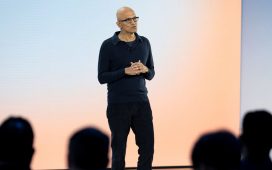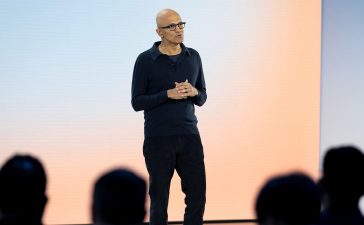Opinion The resurfacing of a 1995 Usenet post earlier this month prompted The Reg FOSS desk to re-examine a pivotal operating system flop … and its long-term consequences.
A 1995 Usenet post from Gordon Letwin, Microsoft’s lead architect on the OS/2 project, has been rediscovered. To modern eyes, it looks like an email, but it wasn’t. Usenet was the original social network and this was a public post. In case you don’t recognize Letwin’s name, he was one of the founding staff members of Microsoft – he’s in the famous 1978 Albuquerque photo. He literally wrote the book on OS/2, that book being Inside OS/2.
Letwin’s 1995 post says:
Why not the August 24? Because August 24, 1995, was the day that Microsoft launched Windows 95. What’s interesting about the post is that it seems to show that even by 1995 – just before what would prove to be Microsoft’s most successful OS launch ever – Microsoft’s OS/2 head honcho still hadn’t put his finger on precisely why it flopped.
Arguably the most important changes in software and hardware that shaped the modern computing gathered force in the 1980s. Industry-standard desktop computers went from eight-bit machines to 16-bit, and then to 32-bit, all over the space of just ten years. This set the stage for the developments of the 1990s that put us where we are today, in a world of multicore 64-bit machines running just two families of operating systems – Windows NT and Unix – which take tens of gigabytes and are still growing.
Windows 95 was a big launch, but its success wasn’t a huge surprise. Beta versions had been circulating for over a year. It’s fair to say that by 1995, OS/2 was dead software walking. That’s not a big revelation; it is the central theme of Letwin’s post. Almost exactly a year later, on September 25, 1996, the last ever major version of OS/2, Warp 4, was released.
For context, by 1995 everyone knew that Windows 95 was going to be a big deal, and that it was all over for OS/2 bar the shouting. A keen user of OS/2 2.0, this vulture moved his home PC to Windows 95 while it was still in beta. The UI was far superior, more hardware worked, and Doom ran much better.
But does Letwin’s post miss the real point?
No, he says:
That, we submit, is wrong on multiple levels (not just the grocer’s apostrophe). Only 32-bit OS/2 – that’s OS/2 2.0 and its successors – could run Windows apps. That isn’t why it was doomed. It’s a red herring. It’s true, but it was a symptom of the decline, not a cause of it. The lack of native apps was a sure sign that OS/2 had already flopped.
(As an aside, OS/2 1.x did have big-name native apps. For instance, the market leaders, Lotus 1-2-3 and WordPerfect, both appeared on OS/2 before Windows. Lotus 1-2-3/G on OS/2 predated 1-2-3/W for Windows. There was a Wordperfect for OS/2 before the first Windows version.)
You don’t need a deep knowledge of the history to work out why this was an effect, not a cause. The logic is inexorable. Let’s step back through the reasoning, chronologically.
Not many high-profile native applications were developed for 32-bit OS/2, because it could run Windows 3.x apps.
This means all the commercially important apps were already Windows apps.
Why? Because Windows was already dominant.
When OS/2 2.0 launched in April 1992, a good enough and commercially successful version of Windows already dominated the market. That was Windows 3.0, launched in May 1990.
In other words, OS/2 2.0 trailed Windows 3.0 by nearly two years. When OS/2 finally went 32-bit, as a platform it had already lost the battle. The lack of native apps was not the reason it lost; the lack of native apps was proof that Windows 3 had already won.
How did Windows 3 win? Because OS/2 1.x had already flopped.
That’s the real crux, but Letwin buries it and almost dismisses it. The really important bit is not about Windows applications. The real question is how and why Windows 3 was able to gain that dominance, why it’s the platform that other companies wrote the apps for.
Letwin mentions this, but he misses the significance. It’s this part:
That’s absolutely right. But Letwin still misses the key element of the story.
An 80386-specific OS/2 1 would have been the right thing to do. Microsoft jointly announced OS/2 1.0 in April 1987, a year and a half after Intel launched the 80386 in October 1985. OS/2 1.0 was so unfinished it didn’t even have a graphical desktop yet. It was a text-mode, command-line-only OS, it cost $325 and required 2 MB of RAM.
If that text-only OS/2 1.0 had been able to multitask DOS apps, it would have been an attractive option. DOS multitasking is all that Quarterdeck’s DESQview could do, for instance – and it cost $399.
But no, as Letwin spells out, OS/2 1.x was limited to the 16-bit 80286:
What he wrote was true, but we think it was not the core reason for IBM’s intransigence.
Yes, Compaq shipped a 386 first, the Compaq Deskpro 386, whose importance we’ve looked at before. Even so, IBM was in the market early and strongly with 386 machines.
The IBM PS/2 Model 80 was a best-seller. As a callow 20-year-old, this vulture set up quite a few SCO Xenix systems on Model 80 machines. Suffice to say, the author still owns one today.
Compaq was first. The Deskpro 386 launched in September 1986, but it was crippled by a 16-bit ISA expansion bus – only its proprietary memory card slot was 32-bit, and $6,499 ($18,718 today) is a lot of money for a very limited machine.
IBM launched the PS/2 lineup in April 1987, with the Model 80 (386) following in July. Unlike the Compaq, IBM’s 386 machines had a full 32-bit expansion bus and could drive 32-bit peripherals.
Nobody could design and build a superior machine in less than a year; it would take more than 11 months to design, implement, and manufacture the first fully 32-bit PC with a wholly new expansion architecture.
Yes, IBM was slower to market and that hurt it, but the Model 80 (and the desktop Model 70, the fastest x86 PC in the world, bar none) was a stunning kit for the time, and they sold well despite being the cost of a good sports car.
IBM was slow to market, but it wasn’t that slow. By comparison, Compaq rushed the Deskpro 386 out, and it showed.
The key point was not the timing, as Letwin alleges. Yes, one of the original clone vendors rushed out an impressive but flawed product; Compaq got there first, and that was embarrassing.
But it was just a minor embarrassment. The real deal was this.
IBM made a promise, and IBM kept its promises. It shipped the PS/2 range with 286s front and center, promising OS/2 compatibility to its customers – a promise IBM wouldn’t break. So it vetoed Microsoft’s plan of pivoting the new OS to the 386, even if that plan was solid and motivated by the correct reasoning.
If OS/2 1.0 had been an 80386 OS, and had been able to multitask DOS apps, we think it would have been a big hit. On the back of that hypothetical success, IBM could have individually couriered a replacement 80386 “planar” (“motherboard” to lesser vendors) to every customer who bought an 80286 PS/2 and wanted OS/2. IBM would still have made more money in the long run.
In his early 20s, this reporter worked on lots of 286 PS/2s and the bulk of owners had never heard of OS/2 and didn’t care. IBM sold the machines as high-quality DOS computers, and that’s all most customers wanted.
But backtracking on its promise that all PS/2 machines would run OS/2 would mean IBM admitted that it had made a mistake. That could not be. IBM did not make mistakes.
As an example, the PS/2 computers did not have reset buttons, because a reset button is how you reboot a computer that’s locked up so hard that Ctrl-Alt-Del doesn’t work. A reset button would mean acknowledging IBM computers crashed, and that was unacceptable. Instead, you had to waste a minute or two power-cycling the things. We did that a lot.
Even nearly a decade after OS/2 flopped, its lead architect, Gordon Letwin, could not admit when and why it flopped. He did know. As he says, OS/2’s initial 1980s versions were 16-bit products, at IBM’s insistence.
That is when the war was lost. That is when OS/2 flopped. Because its initial versions were even more crippled than the Deskpro 386. The Deskpro worked; it was just slow. OS/2’s fate was already sealed long before in the 1980s, because the 16-bit versions were no better at running DOS apps than DOS itself.
Because OS/2 1.x flopped, Microsoft launched a product that fixed the key weakness of OS/2 1.x. That product was Windows 3, which worked perfectly acceptably on 286 machines, but if you ran the same installed copy on a 32-bit 386 PC, it worked better. Windows 3.0 could use the more sophisticated hardware of a 386 to give better multitasking of the market-dominating DOS apps.
OS/2 1.x ran fine on a 386, but it ran exactly the same as it did on a 286. You got no additional benefit from your 32-bit hardware. But Windows 3.0 did. You got memory protection and virtual memory, as well as a usable GUI.
Windows 3 beat OS/2 because IBM insisted that OS/2 ran on the 80286, which crippled the new OS. IBM’s determination to serve its customers with 80286 PS/2s, and keep a promise, resulted in OS/2 being a failure. That is what allowed Windows to gain the upper hand.
In other words, the really important bit of Letwin’s post isn’t what its author thought it was. IBM’s poor planning shaped the PC industry of the 1990s more than Microsoft’s successes.
Windows 3.0 wasn’t great, but it was good enough. It reversed people’s perception of Windows after the failures of Windows 1 and Windows 2. Windows 3 achieved what OS/2 had intended to do. It transformed IBM PC compatibles from single-tasking text-only computers into graphical computers, with poor but just about usable multitasking.
IBM and Microsoft divorced to go separate ways. IBM kept the planned future 32-bit OS/2 for 386 chips, which was surprisingly close to ready by 1990. Microsoft kept the planned CPU-independent, portable OS/2, known as OS/2 3 but internally nicknamed OS/2 NT after the N-Ten chip, which became the Intel i860 RISC processor.
Soon after Windows 3.0 turned out to be a hit, OS/2 NT was rebranded as Windows NT. Even the most ardent Linux enthusiast must concede that Windows NT did quite well over three decades.
OS/2 flopped because the company paying for the work, IBM, designed it for machines that it had already sold. It did not want to let existing customers down.
Even at the time, by its own admission, Microsoft realized that aiming its new OS at emerging CPU technology made more sense.
So with Microsoft’s next OS, Windows NT, that’s what it did. It ended up eventually dominating the industry because it aimed at future hardware: it was designed to run on the i860, specifically the Dazzle motherboard, then the MIPS R3000, as well as x86 machines.
OS/2 2.0 was relatively tiny. In 1992, it needed just 4 MB RAM and 60 MB disk. A year later, at release in 1993, Windows NT 3.1 needed four times as much memory as well as more disk space. As someone who deployed it in production, it wanted considerably more to run well.
The result? Decades of growth in program size, because the dogma is focus on the future, designing for ever-more-powerful hardware and higher-spec computers. Even now, Windows 11 won’t run on a perfectly serviceable kit.
In the mid-1980s, Microsoft plotted a course. By 1995, the signs were there that it had forgotten exactly why. ®












